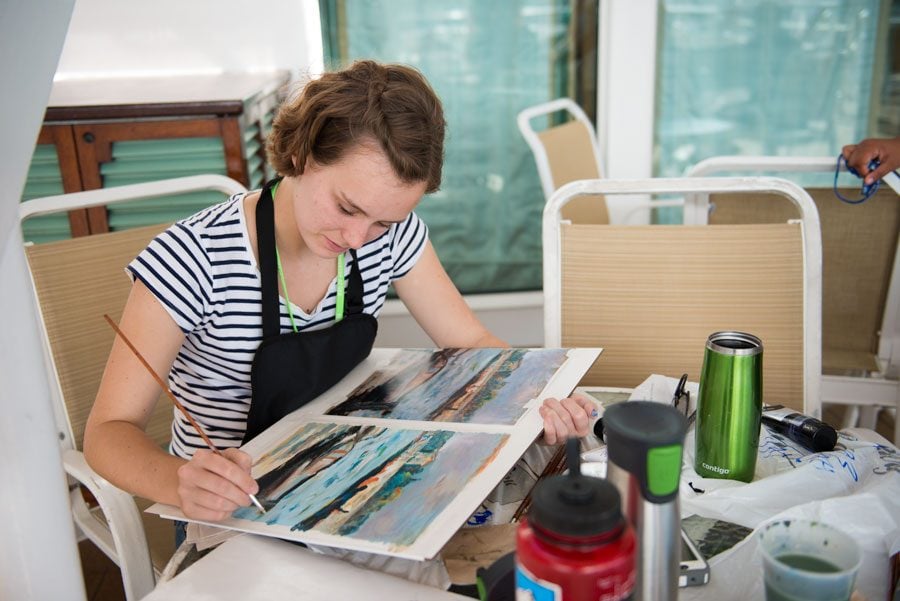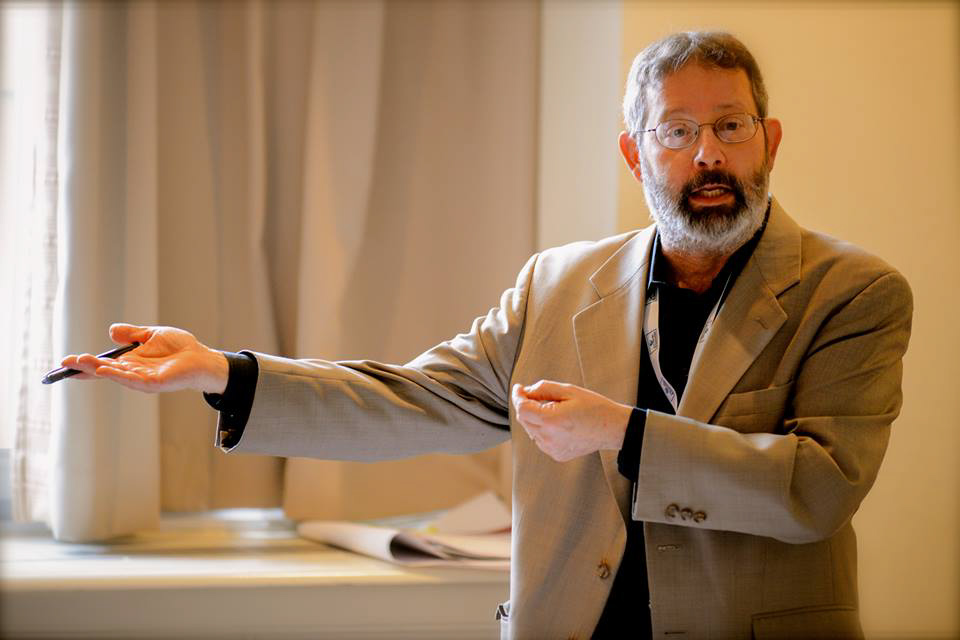
Margery Saunders is a biological studies major at Stanford University, but during her semester with SAS she’s broadening her horizons and taking an art class among her courses on the MV Explorer.
The same holds true for Trevor Cramer, a business major at San Diego State University. He signed up for Anne Simpkins’ painting class on the Fall 2013 voyage to take a break from the three business-related courses in which he’s enrolled for his semester abroad.
“I’ve taken a couple of drawing and painting classes before, so I’m used to what you get from this that you don’t get from other classes,” says Trevor. “It’s a relaxing, creative release from my business classes. Plus it helps me look at things differently.”

Each Semester at Sea voyage offers students classes in nearly every discipline, including the arts (theater, music, and fine arts). Students on this 50th anniversary voyage had the choice of four fine arts areas: painting, drawing, collage and mixed media.
Students use elements of what’s on the ship and what exists in the various ports as part of their inspiration and their subjects, from the architectural lines and arches of the Jer√≥nimos Monastery, in Lisbon, Portugal, to the buildings, people and sculptures in the Plaza de Espa√±a, in Cadiz, Spain.
What’s important in these classes, say voyage art teachers Judy McLeod and Anne Simpkins, is that the classes allow students to “unplug” from all the technology that they are accustomed to using and to slow down and focus in a way that they aren’t normally used to doing.
It also gives them a better understanding of the importance of drafts, editing and revisions, skills transferable from art projects to writing papers.
“This generation is accustomed to quick images that only last for a split second on the screen,” says Prof. McLeod, who teaches drawing and collage on the voyage. “Drawing or painting forces them to slow down their vision to look at details and colors, the subtleties in lights and darks of an object of image,” she adds. “It’s really amazing to see how their perspective changes during a class or an exercise.”
During a recent field lab, in Cadiz, Spain, Prof. McLeod’s drawing class visited several parks and plazas in the coastal city to practice continual line drawing, contextualizing and focus. McLeod’s challenge to the students was to only use their erasers three times during the entire eight-hour, in-port class. If not, they had to use pen.
“You have to make a mark and live with it,” she told the students. “It builds confidence.”
Simpkins, who teaches painting and drawing at Elon University, adds that art classes also present a challenge that helps students understand the importance of creating drafts and editing and revising their work. In her mixed media class, for example, students have to turn in 10 completed pieces, of which they are most proud, from their total work during the semester. At first, students were perplexed, Simpkins recalls.

“The notion of doing 20 things to get to 10 was completely foreign to them,” she says. “So, I think they’re learning that the first thing you do is not your final product.”
That lesson is practiced in the classroom and out in the field. Two-thirds of the way through a 90-minute exercise during Prof. McLeod’s field lab in Spain, the students gathered in a circle, holding their sketch pads in front of them for their classmates to see. The point, McLeod explained to the students, was to learn from one another, inspire one another and to understand that art is a process that happens in steps and stages, but not all at once.
She walked around to each student encouraging them, critiquing the work, and providing advice and suggestions for how to continue to work on it and improve upon what they had. Then, she sent the students back out again, for 30 minutes, to draw before returning for another critique.
“Art is an antidote to what we do in other types of work,” says McLeod, who teaches art at Virginia Commonwealth University. “It provides variety and uses a different portion of one’s brain. I think there’s a lot to be said about having a varied program. There’s overlap but also variety within one’s experience.”




